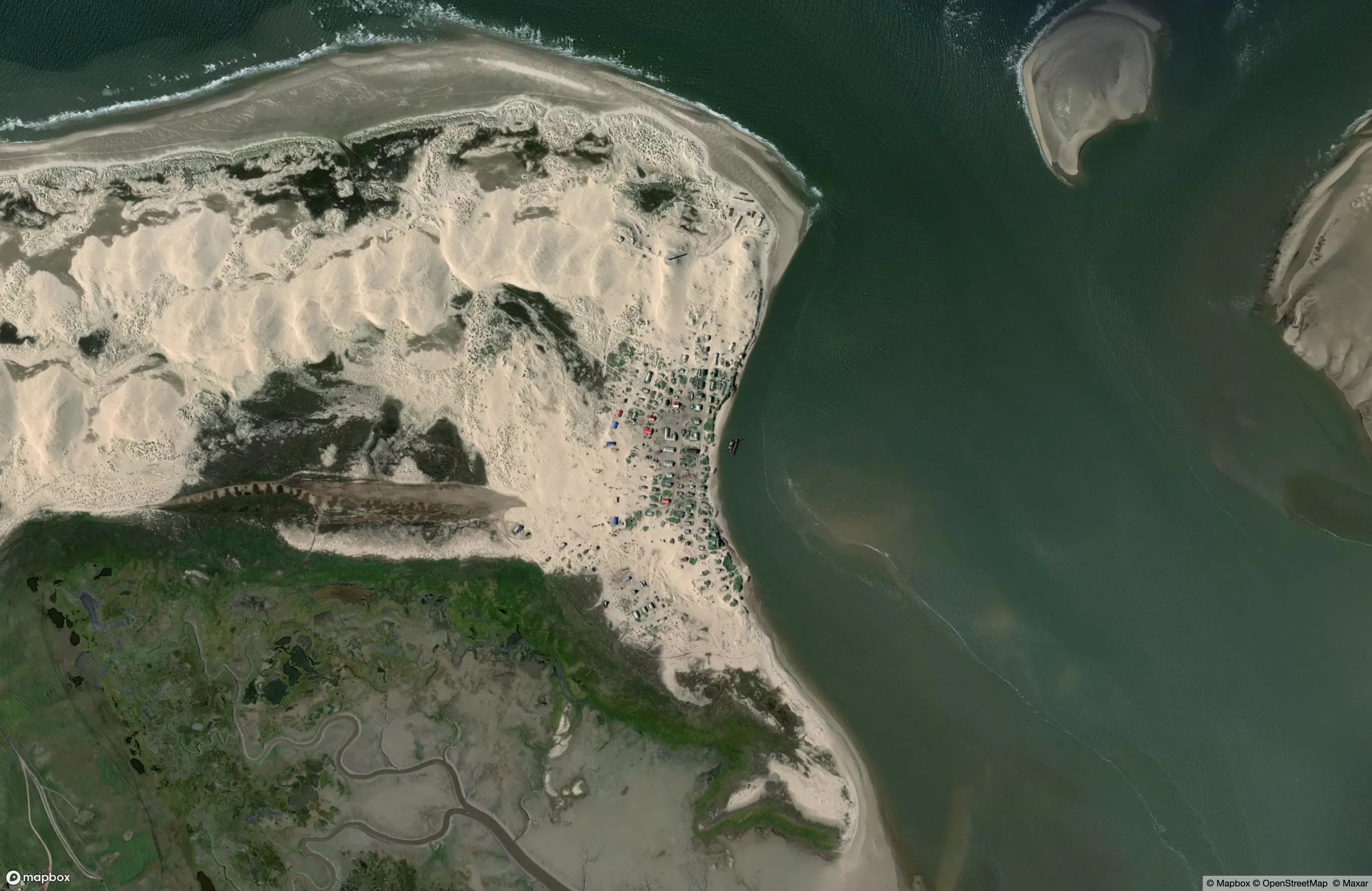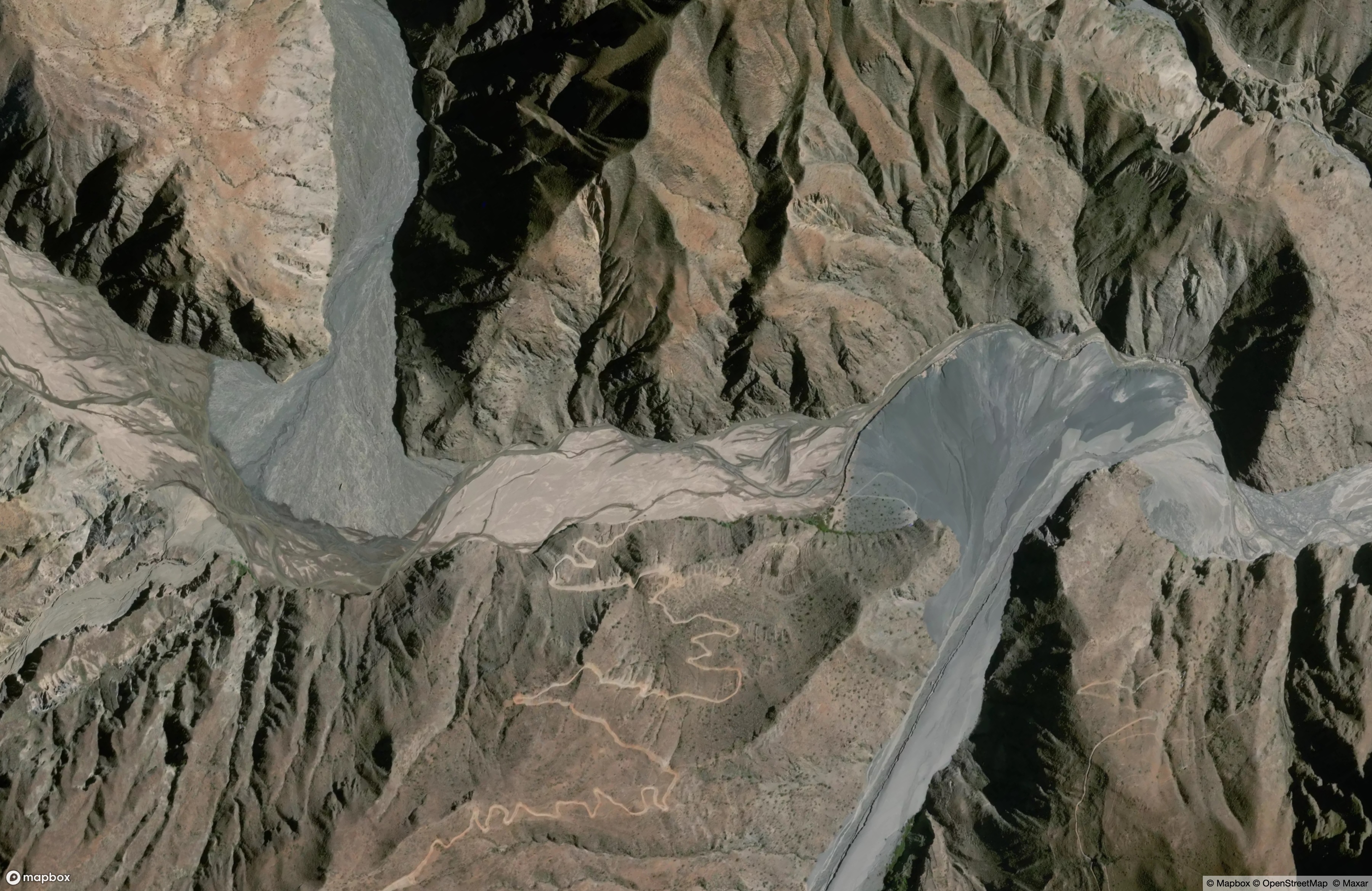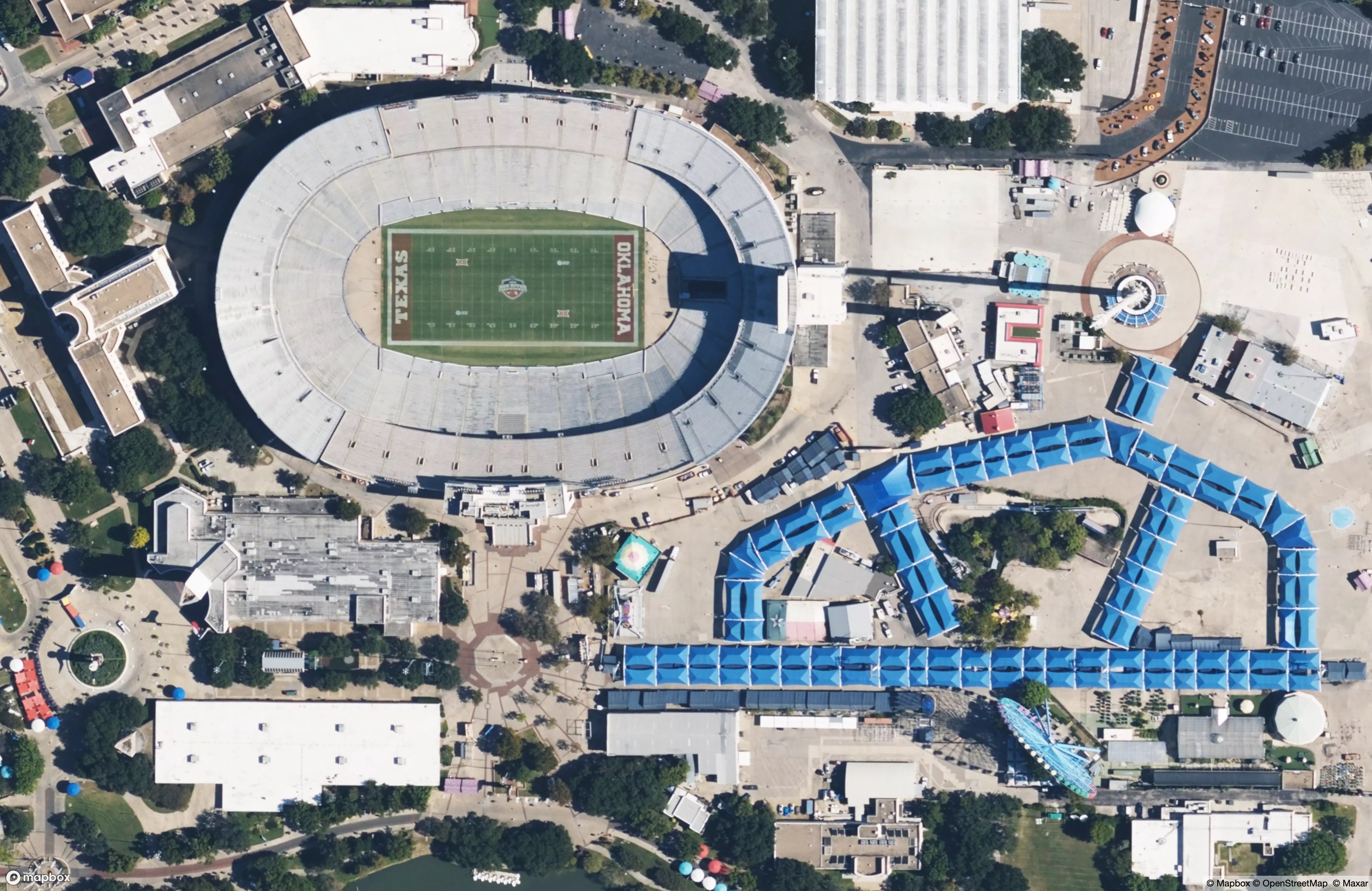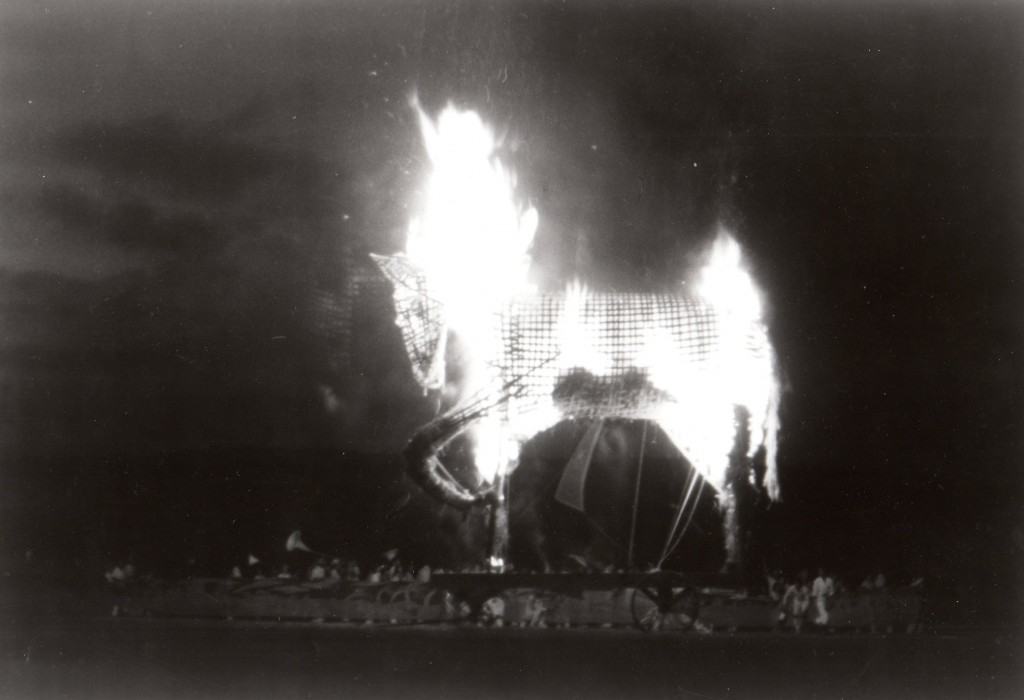Shoyna, Russia

At 67 degrees North, the village of Shoyna is just inside the Arctic Circle. Once home to a major fishing industry, the population has now dwindled to a few hundred as the stocks were depleted. But the fishing had an impact in its time: dredging the seafloor removed the limited vegetation there, and sand began flowing ashore. In the past several decades, whole houses have been lost to the sand, inch by inch. The residents shovel it out as best they can, and wait for more of the hopeful signs of seabed recovery that they’ve begun to notice since industrial fishing ended.
Aucapata, Bolivia

The sand colors caught me here, in Bolivia, where sediment fans from mountain rivers crash into the main flow of the Rio Llica. This happens in various spots as the upstream geology differs between parent and child streams. The Llica makes its way East, down the Andes, past the Iskanwaya sacred site, older than Machu Picchu, through intensive gold mining in the foothills, and eventually joining the Amazon river after connecting through three tributaries.
Dallas, Texas

Hear me out: fire unites us.
In my youth I was a member of the Bread and Puppet Theater in the Northeastern highlands. I formed my political consciousness among the back-to-the-landers and unapoligetic socialists who would gather every year to put on massive festivals of massive art and massive performance. And at the end of every festival - echoing traditions that would also be cribbed by better-known artistic gatherings - a huge puppet would be burned to represent freedom from material evil.

Fast-forward three decades, and I’m scanning Dallas, stumbling above the Texas State Fairgrounds at high zoom, viewing our aerial imagery and seeing names stand out: “Texas” and “Oklahoma”. The Red River Rivalry is such a fixture of Texas life that it warranted special paint at the Cotton Bowl in October 2020 when this image was snagged. Something else was visible to my never-having-left-the-Dallas-airport eyes:

At the risk of Columbusing, I’ll just note that the size of this humanoid was startling from above to someone who’d never been to this particular fair, and who had never had the pleasure of learning about Big Tex and his booming announcements. But the interesting bit to me about this 55ft-tall jean-clad cowboy is that in 2012, he burned down.

Big Tex as seen during the fire on October 19, 2012, photo by Christian Bradford
Big Tex was of course rebuilt immediately (hence his presence in the 2020 imagery), and he’s not strictly speaking an effigy. Texas is a big place. The world is a big place. But I’d like to imagine that - as Big Tex blazed in 2012, at least one or two state fair attendees were stopped in their tracks, hearing over the crackle a memory of a Shape-Note chorale and a jangling Gamelon, with a connection to ceremonies of fire around the world.